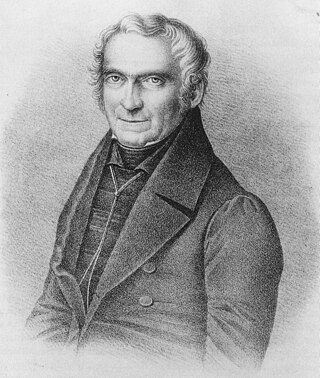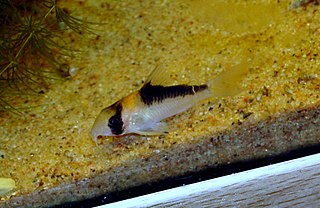
Johann Natterer was an Austrian naturalist and explorer. He was the son of royal falconer Joseph Natterer and along with his brother Joseph Natterer (1786–1852) took a keen interest in natural history. He collected natural history specimens extensively from South America and numerous species from his collections were named after him.

Sterba's corydoras is a member of the South American Corydoras genus of freshwater aquarium catfish and one of the most popular species of Corydoras due to its attractive markings. The fish is native to the Guaporé River region between Bolivia and Brazil.

Adolfo's catfish is a tropical freshwater fish belonging to the Corydoradinae sub-family of the family Callichthyidae. It originates in inland waters in South America, and is found in the Rio Negro basin and the Rio Uapes in Brazil. It is also known as Adolfo's corydoras. It has similar patterns to the C. imitator but it has a shorter snout and red coloration in front of its dorsal fin.
The pink corydoras is a tropical freshwater fish belonging to the subfamily Corydoradinae of the family Callichthyidae. It originates in inland waters in South America, and is found in the Meta River basin in Colombia. A maximum body length of 4.2 cm has been reported. It was named in honor of pet-book publisher Herbert R. Axelrod (1927–2017), who helped collect type series and sent it to the Senckenberg Museum in Frankfurt, Germany.
The barredtail corydoras or Cochu's catfish is a tropical freshwater fish belonging to the Corydoradinae sub-family of the family Callichthyidae. It originates in inland waters in South America, and is found in the Upper Araguaia River basin in Brazil. In the system of "C-Numbers" developed by the German fishkeeping magazine DATZ to identify undescribed species of Corydoras in the aquarium hobby, this fish had been assigned number "C22" until it was correctly identified.
Corydoras geoffroy is a tropical freshwater fish belonging to the Corydoradinae sub-family of the family Callichthyidae. It originates in coastal rivers in South America, and is found in Suriname and French Guiana.

Corydoras haraldschultzi is a tropical freshwater fish belonging to the Corydoradinae sub-family of the family Callichthyidae. It is found in Brazil and Bolivia.

Schwartz's catfish is a tropical freshwater fish belonging to the Corydoradinae sub-family of the family Callichthyidae. It originates in inland waters in South America, and is found in the Purus River basin in Brazil.
Britski's catfish is a tropical freshwater fish belonging to the subfamily Corydoradinae of the family Callichthyidae native to South America where it is found in the upper Paraguay River basin in Brazil. This species was formerly classified as Brochis britskii.
Han Nijssen was a Dutch ichthyologist.
Astroblepus eigenmanni is a species of catfish of the family Astroblepidae. It can be found on Ecuador.
Astroblepus mariae is a species of catfish of the family Astroblepidae. It can be found on the Meta River in Colombia and Venezuela.
Astroblepus rengifoi is a species of catfish of the family Astroblepidae. It can be found on the Atrato River in Colombia.
Astroblepus riberae is a species of catfish of the family Astroblepidae. This cavefish is endemic to the Cajamarca region in Peru.
Corydoras virginiae, the Miguelito cory, is a species of armored catfish from the family Callichthyidae, found commonly in Peru.

Corydoras agassizii is a species of catfish found in the Amazon basin. It can be found in the border area of Peru and Brazil. It lives in tropical waters with a water temperature of 22 - 26 °C, a pH of 6.0 - 8.0 and a hardness of 2 - 25 dH.
Corydoras noelkempffi is a tropical freshwater fish belonging to the Corydoradinae sub-family of the family Callichthyidae. It originates in inland waters in South America. Corydoras noelkempffi is found in Bolivia.
Corydoras coriatae is a tropical freshwater fish belonging to the Corydoradinae sub-family of the family Callichthyidae. It is endemic to the Ucayali River basin in Peru.
Corydoras robineae the banner-tail corydoras is a tropical freshwater fish belonging to the Corydoradinae sub-family of the family Callichthyidae. It originates in inland waters in South America. Corydoras robineae is restricted to the Upper Rio Negro basin in Brazil.
Scleromystax reisi is a species of catfish of the family Callichthyidae. Its distribution is in the streams of tributaries of the rio Jacuí and rio Camaquã of the laguna dos Patos drainage, of the Rio Grande do Sul in Brazil.





